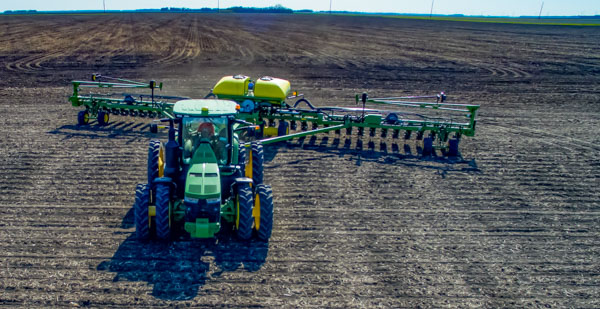Corn, including early corn, is a valuable crop for many row crop farmers, particularly dairy farmers, for several reasons. Firstly, corn silage serves as a cost-effective and nutrient-rich feed option for cows and cattle. It typically constitutes a huge portion of the total portion, ranging from 35% to 60%. And accounts for 25% to 40% of the total lactating cow feed cost. This makes it an economical choice for dairy farmers looking to provide high-quality feed while managing expenses.
In this blog post we will delve in deeper into the benefits and potential downsides of planting early corn in California.
Benefits of Planting Early

- Planting in Cooler Weather: In California, the corn planting season extends from April to June. It is possible for temperatures in June to reach 100°F or higher. If corn is planted during the hot weather of June or later, it may immediately experience heat stress. Heat stress can drastically reduce yield and quality.
- Avoidance of Midsummer Droughts: Planting crops early may lead to earlier flowering, which is vital for avoiding the yield-reducing impact of midsummer droughts, a frequent issue in California’s climate. Additionally, early planted corn might require less irrigation water.
- Double or Triple Cropping: Planting corn early also means it will be harvested sooner. California’s climate is quite favorable. If the early corn is harvested in July or August, there may be sufficient time to plant an additional crop.
Downsides of Early Corn Planting
Planting early offers numerous advantages, yet it also presents challenges.
- Cold Stress: Planting too early can expose seeds to frost, wet conditions, hindering germination and emergence, leading to potential yield loss.
- Increased Vulnerability: The longer the seeds take to emerge, the more susceptible they are to diseases, insects, and adverse weather conditions.
- Uneven Emergence: Early planting can result in uneven emergence, which may lead to pollination issues and ultimately affect the uniformity and quality of the crop.
Optimal Planting Time
The optimal time for planting corn in California generally falls between late April and early May. This period allows the soil to warm up to the ideal temperature range of 55-60°F, which is conducive to corn germination and growth. Planting outside this window can lead to slower germination and stunted growth due to suboptimal soil temperatures.
AgNote for Corn Growers
AgNote’s farm management software can significantly aid corn growers in California by streamlining their farm management processes. It offers row crop management features that allow for efficient season planning and tracking. Which is crucial for corn’s seasonal nature. The software’s spray tracking and irrigation management tools are particularly beneficial in California’s varied climate, helping to ensure optimal crop health and yield. Additionally, AgNote’s crop scouting feature will help farmers identify and address potential issues early, preventing crop loss and maintaining high-quality harvests. If you are interested, please register for free seven-day trial and take AgNote for a test spin.
Conclusion
The decision to plant corn early is strategic. One that must balance the benefits of an extended growing season and market timing against the risks of cold stress and increased vulnerability to pests and diseases. By carefully considering the regional climate and soil conditions, growers can optimize their planting schedule to maximize yield and quality. Ultimately, the success of early corn planting hinges on a grower’s ability to navigate the delicate interplay between nature’s unpredictability and agricultural expertise.